
Watsontown is a borough in Northumberland County, Pennsylvania, United States. The population was 2,351 at the 2010 census. It was named for John Watson, an early settler.

Elliott Ladd Coues was an American army surgeon, historian, ornithologist, and author. He led surveys of the Arizona Territory, and later as secretary of the United States Geological and Geographical Survey of the Territories. He founded the American Ornithological Union in 1883, and was editor of its publication, The Auk.
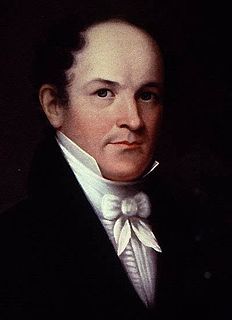
Thomas Nuttall was an English botanist and zoologist who lived and worked in America from 1808 until 1841.
William Cooper (1798–1864) was an American naturalist, conchologist and collector.

Charles Barney Cory was an American ornithologist and golfer.
William Gambel was an American naturalist, ornithologist, and botanist from Philadelphia. As a young man he worked closely with the renowned naturalist Thomas Nuttall. At the age of eighteen he traveled overland to California, becoming the first botanist to collect specimens in Santa Fe, New Mexico and parts of California.

William Brewster was an American ornithologist. He co-founded the American Ornithologists' Union (AOU) and was an early naturalist and conservationist.

Henry John Elwes, FRS was a British botanist, entomologist, author, lepidopterist, collector and traveller who became renowned for collecting specimens of lilies during trips to the Himalaya and Korea. He was one of the first group of 60 people to receive the Victoria Medal of the Royal Horticultural Society in 1897. Author of Monograph of the Genus Lilium (1880), and The Trees of Great Britain & Ireland (1906–1913) with Augustine Henry, as well as numerous articles, he left a collection of 30,000 butterfly specimens to the Natural History Museum, including 11,370 specimens of Palaearctic butterflies.

Herbert John Webber was an American plant physiologist, professor emeritus of sub-tropical horticulture, first director of the University of California Citrus Experiment Station, and the third curator of the University of California Citrus Variety Collection. Webber was the author of several publications on horticulture, member of numerous professional horticultural and agricultural associations.
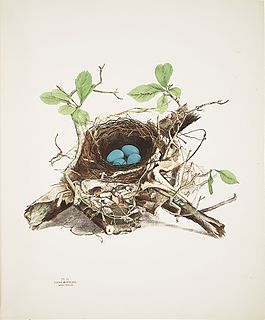
Illustrations of the Nests and Eggs of Birds of Ohio is a two volume book of scientific illustrations published by subscription between the years 1879 and 1886. It was conceived by Genevieve Estelle Jones, who began work on the book in 1877 and was initially its principal illustrator. Her childhood friend Eliza Jane Shulze also undertook illustrations for the book. The book was completed by Jones's family after her death from typhoid fever.

The Nuttall Ornithological Club is the oldest ornithology organization in the United States.
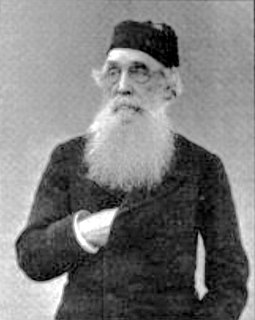
Samuel Stevens was an entomological collector and a natural history agent in London. He was one of the founding members of the Entomological Society of London. He sold specimens from collectors that he sponsored including Alfred Russel Wallace and Henry Walter Bates.

Walter Bradford Barrows was an American naturalist who wrote books about birds and published articles in scientific journals.
Henry Augustus Purdie was an American ornithologist and naturalist. He was a founding member of the American Ornithologists' Union, and a president of the Nuttall Ornithological Club.
The American Iris Society is an organization dedicated to sharing information about and sponsoring research on the iris, a temperate zone plant that is often cultivated for its showy flowers. A major goal in its early years was to bring order to the then-confused nomenclature of the genus Iris, especially garden iris species and cultivars. Its members comprise horticulturists, botanists, gardeners, plant breeders, and nursery owners.
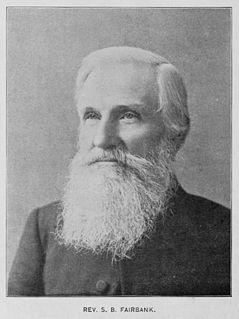
Samuel Bacon Fairbank D.D. was an American evangelist, writer, translator, and amateur naturalist who worked in India with the American Marathi Mission in western India, mainly in Wadala Bahiroba (Wadale), near Ahmednagar. Fairbank was responsible for some of the earliest translations of hymns into Marathi. He also worked on a number of initiatives to improve agriculture. His children and several relatives continued to work as missionaries in India. Trochalopteron fairbanki, a bird, Fairbankia and Achatina fairbanki, molluscs are named after him.
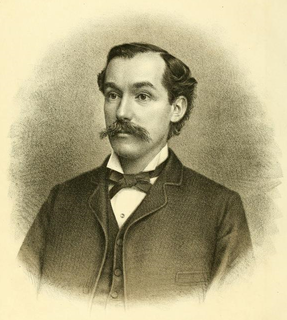
Thomas George Gentry was an American educator, ornithologist, naturalist and animal rights writer. Gentry authored an early work applying the term intelligence to plants.

Albert Franklin Yeager was an American horticulturalist. From his work developing hardy vegetables and fruits at the North Dakota Agricultural College (NDAC) and the North Dakota Agricultural Experiment Station (NDAES), he was known as the "plant wizard of the north" and the "Luther Burbank of North Dakota."














